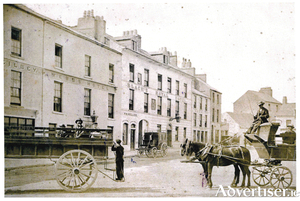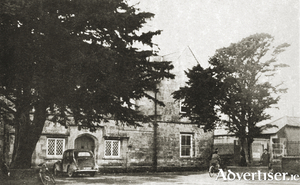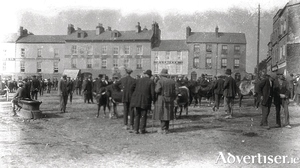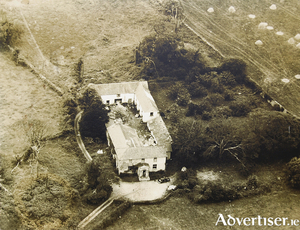Search Results for 'Galway Union'
4 results found.
Bianconi in Galway

Charles Bianconi is generally regarded as the man who put Ireland on wheels. He developed a network of horse-drawn carriages that became Ireland’s first integrated transport system, building on the existing mail roads and coach roads that were already there. There was a general tax on coaches at the time, which precluded the middle classes from using theirs, and a relatively peaceful period after the Battle of Waterloo meant that a great many horses, bred for the army, became cheap on the market. His system offered connections with various termini, his prices were cheap and so he was well patronised, in spite of the discomfort felt by passengers. Often, when going up a hill, some passengers would alight to make the carriage lighter for the horses.
The Galway Workhouse

The first formal meeting of the Board of Guardians of the Galway Workhouse took place in the Town Hall on July 3, 1839, and the building opened on March 2, 1842, one of many such workhouses built around the country. On March 16, the first pauper died from old age and destitution. The numbers of inmates gradually increased to 313 by May 1845, after which the Famine made a huge impact on the project. It was originally designed for 800 destitute persons but this quickly increased to 1,000. Included in the complex was an infirmary for sick paupers but this rapidly became the hospital for the city’s poor.
Fair day, Eyre Square, September 2, 1926

This photograph of a cattle fair on Eyre Square was taken looking toward the west. The buildings in the distance were, on the far left, Gilbey’s, drinks distributors which later moved premises to William Street; next to it was Webb’s Hotel. This was originally built in 1810 and was known as the Clanricarde Arms. It was later known as Kilroy’s Hotel, then Murphy’s, until it was taken over by Joe Delaney and he changed the name to The Imperial Hotel.
Dangan House

Dangan House, “beautifully situated on the banks of the fine river Corrib” directly opposite Menlo Castle, was built in 1684 as the seat of the Martin family. ‘Humanity Dick’ Martin was brought up there. John Redington purchased Dangan Demesne from Anthony Martin about 1830 and became the proprietor of the townland. It was, for a short time afterwards, converted into an Ursuline Convent. The nuns were there from 1839 to 1844. Dangan House was left to the Board of Guardians of the Galway Union for an auxiliary workhouse until 1854. The only trace of the original Martin building today is the tea-house folly which is on the banks of the river. A nearby property known as Dangan Cottage was leased by a number of American artists in the 1870s but was described as a ruin in the 1890s.

